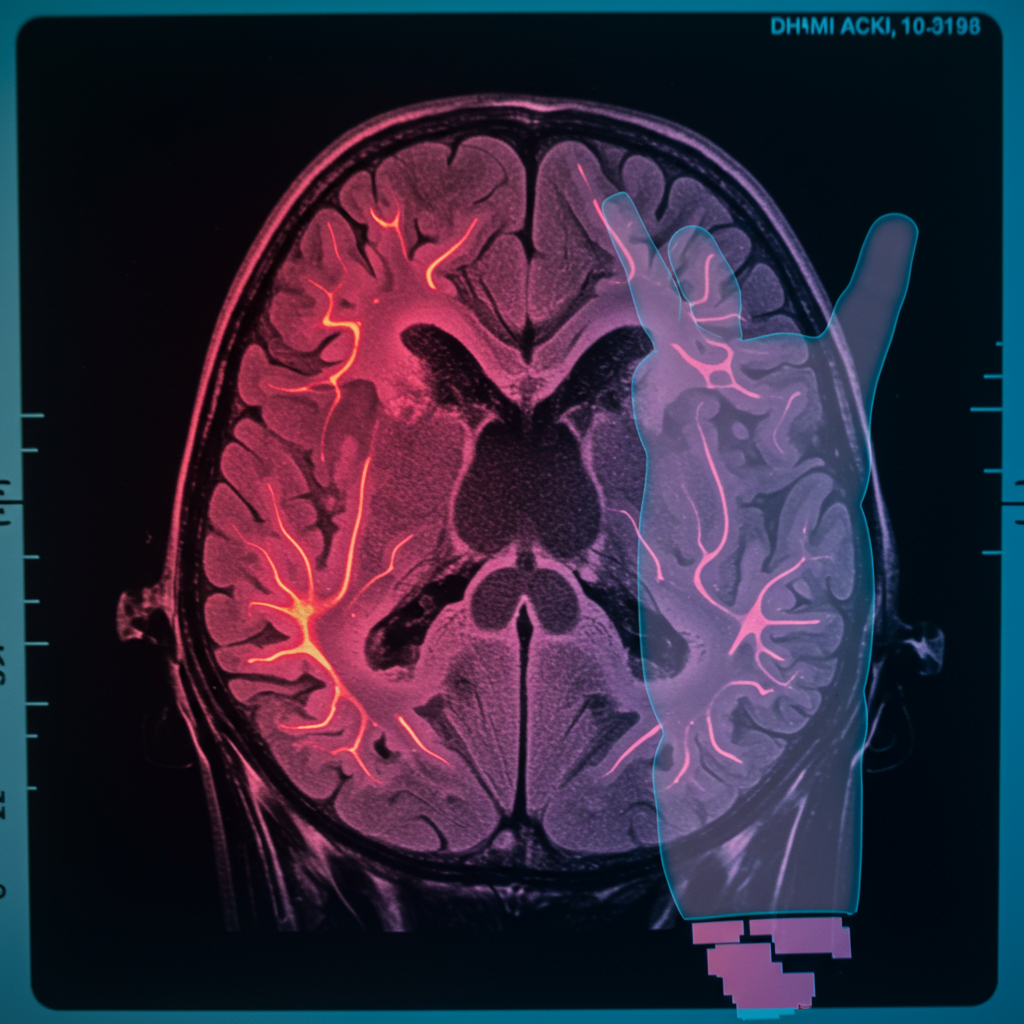The alarming rise in early-onset colorectal cancer (EOCRC) diagnoses has perplexed the medical community and the public alike. While lifestyle, environmental factors, and gut microbiome disruptions are frequently implicated, new research suggests a surprising piece of the puzzle: shifts in how certain tumors are classified. A recent European study highlights that a significant portion of the observed increase in EOCRC may be an “artifact” of changed diagnostic criteria for neuroendocrine neoplasms (NENs), rather than a genuine surge in traditional colorectal adenocarcinoma. This nuanced understanding is crucial for accurately interpreting cancer trends and developing effective public health strategies.
Decoding the EOCRC Surge: A Classification Conundrum
For years, the medical community has observed a concerning uptick in colorectal cancer cases among younger individuals. While many factors are at play, a groundbreaking French cohort study, published in JAMA Network Open, reveals a critical detail. The study indicates that changes to neuroendocrine neoplasm (NEN) classification in 2013 significantly influenced reported EOCRC incidence. These changes created an apparent rise in early-onset cases that was not solely attributable to a true increase in colorectal adenocarcinoma (ADC), the most common type of colon cancer.
NENs are a diverse group of tumors originating from neuroendocrine cells throughout the body. Their reclassification in 2013 likely led to more precise identification, impacting how they were reported within broader cancer statistics. Before this reclassification, many NENs might have been grouped differently or misidentified. This diagnostic evolution, while improving accuracy, inadvertently skewed incidence data for EOCRC.
The French Study: Unpacking the Data
Researchers analyzed data from over 63,000 patients in seven French regions diagnosed with invasive colorectal cancer between 2004 and 2021. This specific timeframe allowed them to observe the direct impact of the 2013 NEN classification update. The findings were stark:
EOCRC Increase: Incidence rose notably among individuals aged 15 to 39 years, increasing by 2.9% annually in females and 2.6% in males. Rates remained stable in those aged 40 to 49.
Adenocarcinoma Stability: Across all age groups, the incidence of colorectal adenocarcinoma remained consistent throughout the study period, showing no significant variation. This suggests the actual occurrence of this prevalent cancer type did not dramatically increase.
NEN Fluctuation: Neuroendocrine neoplasm rates exhibited a unique pattern. They surged dramatically between 2004 and 2013, with annual increases ranging from 10.1% to 12.6%. However, after the 2013 reclassification, NEN incidence declined, dropping between 1.1% and 1.7% per year.
Youthful Impact: The increase in NENs was most pronounced in the youngest age group (15 to 39 years), where NENs comprised a significant 29.7% of all EOCRC cases. This proportion was much lower in older groups: 5.7% in 40-49 year olds and just 1.4% in those aged 50 or older.
Metastatic ADC: Despite stable overall ADC incidence, a concerning trend emerged: metastatic ADC cases steadily increased between 2013 and 2021, rising between 1.2% and 2.3% per year. This highlights a continued rise in advanced-stage disease among younger patients, irrespective of classification shifts.
These results emphasize the critical need to consider evolving diagnostic practices when interpreting cancer statistics. Without accounting for such shifts, observed trends can be misleading.
Beyond Reclassification: The Multifaceted Rise of Early-Onset CRC
While reclassification offers a partial explanation, it doesn’t diminish the reality of a genuine increase in early-onset cancer. The phenomenon is widespread, impacting not only colorectal cancer but also over ten other common cancers, including breast, uterine, and kidney cancers, particularly in the 20-29 age range. Globally, nearly 10% of new colorectal cancers occur in people under 50. Researchers are actively investigating a complex web of interconnected factors driving this alarming trend.
Key contributing elements include:
Lifestyle Changes: Diets high in ultra-processed foods, rising obesity rates, increased sedentary behavior, and heavy alcohol consumption are frequently cited.
Environmental Factors: Exposure to an overabundance of microplastics, environmental pollutants, and endocrine-disrupting chemicals is under scrutiny.
Gut Microbiome Disruptions: Alterations in the composition and function of gut bacteria are emerging as a significant area of research.
Birth Cohort Effect: This theory suggests that individuals born in later decades have encountered a unique “package” of changing environmental and lifestyle risk factors. These exposures may accelerate cancer development, creating a new biological window for cancer in younger populations.
The Gut Microbiome: A Hidden Driver?
Among the most compelling biological drivers being investigated is the role of specific gut bacteria and their toxins. Recent landmark studies, including research published in Nature, have strongly linked colibactin, a potent DNA-damaging toxin, to the rise in early-onset colorectal cancer.
Colibactin is produced by certain strains of harmful gut bacteria, such as specific E. coli, Klebsiella pneumoniae, and Citrobacter koseri. This toxin can inflict distinct and challenging-to-repair DNA damage on colon cells, setting the stage for cancer development. Analyzing nearly a thousand colorectal cancer tumors from 11 countries, scientists found that colibactin-related DNA mutations were 3.3 times more common in patients under 40 compared to those over 70. Approximately 50% of early-onset colorectal cancers in individuals under 40 carried this distinctive “signature” of colibactin exposure.
Intriguingly, colibactin-induced mutations are often “early clonal” events, meaning they occur very early in the cancer’s development, sometimes even in childhood. These early mutations can impact critical genes like APC, accelerating carcinogenesis. Researchers hypothesize that modern lifestyle shifts—such as increased early-life antibiotic use, dietary changes (more processed foods, less fiber), higher rates of C-sections, and wider use of early group childcare—might predispose more children to harbor an abundance of colibactin-producing bacteria.
Are Early-Onset Cancers Biologically Different?
Beyond the drivers, there’s growing evidence that early-onset colorectal cancers might possess unique biological characteristics. They often appear to be more aggressive, frequently forming in the left colon and rectum. This aggressive nature is further supported by increased death rates from colorectal, uterine, and testicular cancers among individuals under 50, even as overall cancer death rates in this age group have not risen significantly.
While inherited genetic mutations (germline mutations) like those in BRCA1/2 or associated with Lynch syndrome play a role in some cases, experts suggest they have a limited overall impact on the observed population-wide increase in early-onset cancers. The human genome doesn’t evolve rapidly enough to explain such a swift rise. However, for individual patients, genetic testing for these predispositions is crucial, especially since Lynch syndrome-associated tumors respond exceptionally well to immunotherapies.
Actionable Insights: Recognizing Symptoms and Seeking Care
Given the complex landscape, increased awareness and proactive health-seeking behaviors are paramount. Healthcare providers are already adapting, no longer ruling out cancer solely based on a patient’s age. However, a significant challenge lies in encouraging younger individuals to seek medical attention for persistent or problematic symptoms. They often dismiss these signs due to busy lifestyles or the assumption that symptoms will resolve on their own. This delay can lead to diagnoses at more advanced, harder-to-treat stages.
“Red flag” symptoms for early-onset colorectal cancer include:
Regular rectal bleeding: Especially if persistent or increasing.
Abdominal pain: Persistent cramps, gas, or discomfort.
Changes in bowel habits: Persistent diarrhea, constipation, or narrowing stool.
Iron deficiency anemia: Often indicative of occult (hidden) blood loss.
Prompt consultation with a healthcare professional for any of these symptoms is essential, regardless of age. Beyond diagnosis, genetic testing for underlying predispositions, particularly Lynch syndrome, can significantly impact treatment pathways and outcomes. Looking ahead, the development of non-invasive tests, such as stool-based screenings for prior colibactin exposure, could revolutionize early identification and risk stratification.
Public Health Implications and the Road Ahead
The findings regarding classification changes, combined with deeper insights into lifestyle factors and biological mechanisms like colibactin exposure, offer a more complete picture of the EOCRC surge. This demands that public health decision-makers account for both “artifactual” increases from diagnostic shifts and true biological accelerations when monitoring cancer incidence.
The ongoing discussions about lowering the recommended age for colorectal cancer screening are directly informed by this evolving understanding. Comprehensive public health strategies must move beyond general awareness campaigns to targeted interventions addressing lifestyle factors, environmental exposures, and even the gut microbiome. Continued research into early-life exposures, microbial interactions, and personalized prevention strategies will be vital in curbing the rising tide of early-onset colorectal cancer and improving outcomes for younger generations.
Frequently Asked Questions
How did changes in tumor classification affect early-onset colorectal cancer rates?
A 2013 reclassification of neuroendocrine neoplasms (NENs) caused an apparent surge in early-onset colorectal cancer (EOCRC) cases, particularly among individuals aged 15-39. Before 2013, NEN incidence significantly increased, then declined after the reclassification, while traditional adenocarcinoma rates remained stable. This suggests that improved diagnostic criteria for NENs made up a notable portion of the reported EOCRC rise, highlighting the importance of considering diagnostic shifts when analyzing cancer trends.
What is colibactin, and how might it contribute to early-onset colorectal cancer?
Colibactin is a DNA-damaging toxin produced by specific harmful gut bacteria, such as certain E. coli strains. Research indicates that colibactin-related DNA mutations are significantly more common in early-onset colorectal cancer (EOCRC) patients, especially those under 40. This toxin can cause “early clonal” mutations in critical genes like APC*, accelerating the cancer development process. It’s hypothesized that early-life exposures, including antibiotic use and dietary changes, might lead to an abundance of colibactin-producing bacteria in the gut, thereby increasing EOCRC risk.
What are key “red flag” symptoms for early-onset colorectal cancer that younger adults should watch for?
Younger adults often delay seeking medical attention for symptoms, leading to later diagnoses. It’s crucial to be aware of “red flag” symptoms for early-onset colorectal cancer, regardless of age. These include persistent rectal bleeding, ongoing abdominal pain or discomfort, noticeable and unexplained changes in bowel habits (like new-onset diarrhea or constipation), and iron deficiency anemia. Prompt consultation with a healthcare professional for any of these symptoms is highly recommended to ensure early detection and better outcomes.




